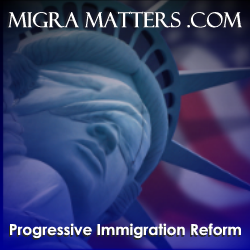Towards a common sense immigration policy
 After years of controversy and partisan infighting, we appear today no closer to any meaningful new national immigration policy than we were over six years ago when Bush first claimed he would make it a priority upon taking office. Much of the blame for this situation clearly rests on the shoulders of the President and his party, who during six years of essentially unopposed control of government, failed to reach any acceptable compromise. But, there have also been divisions within the Democratic Party that have helped stall the effort.
After years of controversy and partisan infighting, we appear today no closer to any meaningful new national immigration policy than we were over six years ago when Bush first claimed he would make it a priority upon taking office. Much of the blame for this situation clearly rests on the shoulders of the President and his party, who during six years of essentially unopposed control of government, failed to reach any acceptable compromise. But, there have also been divisions within the Democratic Party that have helped stall the effort.
While stating a uniform policy of supporting "comprehensive reform", exactly what constitutes such reform can differ greatly within the Democratic Party.
The three core components of comprehensive reform presented thus far; Enforcement, Guest Workers, and A Path to Citizenship, have greatly varying degrees of support, and none appears to be universally accepted in their currently proposed incarnations legislatively. Even within the three major Democratic camps on this issue, which could generally be categorized as the "Immigrant-Rights/ Liberal" wing, the "DLC/Corporate" wing, and the "Lou Dobbs Democrat/Populist" wing, there are divisions. We are in fact nearly as divided as our Republican opponents.
But this need not be the case.
With the intelligent incorporation of some of the policies and ideas already advocated by organized labor, we could craft an immigration policy that would satisfy the needs of US workers, while still allowing for a reasonable flow of new immigrants wishing to seek a better life.
But there is division even among the leaders of the nations largest unions on this issue. So which policies and proposals would work best to unify the Democratic Party might not at first appear clear. About two years ago, the country's labor unions split into two: a coalition of unions with millions of union members bolted from the ranks of the old AFL-CIO, and formed the Change to Win coalition.
The AFL-CIO that remained was about a third smaller than its former self.
This has had important consequences for immigration, particularly the Comprehensive Immigration Reform (CIR) battle currently underway on Capitol Hill, here's why. Historically, the largest organized opposition to immigration in the US was big labor. This was true in the late 1800s, and remained true through almost all of the 1900s. The switch of the unions from the "anti" side to the "pro" side in the late 1990s was thus a momentous change and was spear-headed within the old AFL-CIO by the leaders of the unions that have since bolted to form the Change to Win coalition.
Link
The split has left a division in labor on the issue of immigration reform. The SEIU and UNITE HERE (members of the Change to Win coalition) are part of the Coalition for Comprehensive Immigration Reform, the coalition of immigrant-rights groups, labor, and human rights advocates pushing for immigration reform. Many Win to Change unions also support guest worker programs as a means to allow new immigration and hopefully fill their ranks with new members - the AFL-CIO on the other hand holds some different views. There is good reason why. Generalizing a bit broadly, the Change to Win coalition unions largely organize occupations that cannot be globalized easily (e.g. waiters, hotel staff, laundry workers), while the new AFL- CIO unions largely organize occupations that are subject to strong global competition (e.g. steel workers, auto workers). Put another way, while we can import a car from Japan, dirty dishes cannot be sent to Mexico to be cleaned.
Link
This leaves the AFL-CIO playing a more traditional role in its attempts to protect American workers and jobs.
The fact that labor is divided between the "liberal" policies of the Win for Change camp and the more "conservative" policies of the AFL-CIO, is in fact a very good thing. Since no immigration policy can ever be crafted without the support the American people, and particularly American workers, the positions of the AFL-CIO might gain wider acceptance with American workers and help diffuse some of the more hysterical rhetoric that comes from the Republican right.
It is no small wonder that the self-described spokesmen for American's working men and women such as Lou Dobbs or, Bill O'Liely never interview representatives from labor on the issue of immigration reform.
For all their faux-populism and wanna-be workingman bravado, the loudest opponents of immigration reform hold views quite far from the mainstream of the American labor movement. As much as Lou Dobbs wrings his hands and sighs at the sorry state of our "broken borders" or the thought of comprehensive reform, his head would explode if he were to spend ten minutes listening to AFL-CIO President John Sweeney speak on the issue….Sweeney just makes too much sense for Dobbs. His ideas and policies are well thought out and practical … something that surely can't be said for Dobb's bloviating rants.
This week Sweeney spoke out in the LA Times on immigration reform in general and proposals to initiate a new guest worker program specifically.
In a joint editorial with Pablo Alvarado, executive director of the National Day Laborer Organizing Network, Sweeney voiced his opposition to guest worker programs such as those favored by President Bush and instead believes that any immigrant admitted to work in the US should be put on an immediate track towards permanent residency or citizenship.
He went on to say that foreign workers should enjoy the same rights and protections as US workers, including the right to unionize and to collective bargaining. "Labor laws must protect all workers, regardless of immigration status. If we leave undocumented workers without any real way to enforce labor laws, as our laws do now, we are feeding employers' hunger for more and more exploitable workers, relegating them to second-class status. That hurts all workers."
On a guest worker program:: (It) will assure a steady flow of cheap labor from essentially indentured workers too afraid of being deported to protest substandard wages, chiseled benefits and unsafe working conditions.
Such a system will create a disenfranchised underclass of workers. That is not only morally indefensible, it is economically nonsensical. We’ve had plenty of bad experiences with such shortsighted answers to a complicated problem..
."The solution to the immigration crisis will require a new approach," Sweeney said. " First, everyone who is admitted to work must immediately be on a track toward permanent residency or citizenship."
Sweeney went on to list other key reforms:
The guidelines Sweeney laid out this week pretty much match those first put forward last year in the unions Executive Council statement on immigration reform.Responsible Reform of Immigration Laws Must Protect Working Conditions for all Workers in the U.S.
(The) exploitation of workers will continue as long, as it makes economic sense to do so, to the detriment of U.S.-born and foreign-born workers alike. Unfortunately, the lax enforcement of labor and employment laws has given too many unscrupulous employers the economic incentive to recruit undocumented workers…
The only meaningful way to remove that perverse economic incentive and to equalize the competitive playing field is to ensure that all those who gain the benefit of a worker’s labor, … abide by all labor and employment laws. That means that the immigration reform law must provide real and enforceable remedies for labor and employment law violations that are available to all workers, regardless of their immigration status…
Legalization is an important worker protection. History shows that legalizing this population benefits all workers. … Without a legalization program, the economic incentive to hire and exploit the undocumented will remain, to the detriment of U.S. workers who labor in the same industries as the undocumented, because all workers will see their working conditions plummet.
…Guestworker programs are bad public policy and operate to the detriment of workers, in the both the public and private sector, and of working families in the U.S. The abuses suffered by workers in the first such program, the post World-War II Bracero program, are well documented. The negative effects of the modern versions of the “guestworker” construct—such as the H1-B and H2-B programs—are all too evident today. Workers around the country are witnessing the transformation of formerly well-paying, permanent jobs into temporary jobs with little or no benefits, which employers are staffing with vulnerable foreign workers who have no real enforceable rights through the guestworker programs. These modern programs have had a major and substantial detrimental effect on important sectors of our economy.
In our view, there is no good reason why any immigrant who comes to this country prepared to work, to pay taxes, and to abide by our laws and rules should be denied what has been offered to immigrants throughout our country’s history, a path to legal citizenship. To embrace instead the creation of a permanent two-tier workforce, with non-U.S. workers relegated to second-class “guestworker” status, would be repugnant to our traditions and our ideals and disastrous for the living standards of working families.
We recognize that our economy may face real labor shortages in the coming years, as the baby boomer generation retires. Instead of relying on a construct that guarantees the deterioration of working conditions in the U.S., we should focus on a meaningful solution that guarantees full workplace rights for all workers, both foreign-born and native, and also permits employers to hire foreign workers to fill proven labor shortages. The solution is simple: Congress should revise the permanent employment-based visas system and devote more resources to removing processing delays.
Employment-based admissions for permanent visas (commonly known as “green cards”) are subject to labor certification provisions…(and Congress has arbitrarily set the number of these visas at 140,000 annually. That approach should be changed so that the number of visas available responds to actual, demonstrated labor shortages, which will satisfy employers’ needs for workers, and will prevent the creation of a secondary class of workers and residents, because the new foreign workers will have full employment rights and the promise of a permanent future in our democracy.
Without rising living standards abroad for workers and the poor, the pressure for illegal immigration will continue. U.S. foreign policy, as well as trade and globalization policies, must be grounded upon a coherent national economic strategy, as described in An Economic Agenda for Working Families, adopted at the AFL-CIO’s 2005 Convention.
So in essence the AFL-CIO is already advocating positions on which the vast majority of Democrats could agree. They protect workers, both immigrant and native born, and set guidelines for future immigration that will not be exploitive.
Ironically, these proposals would end up being easier to enforce and less costly to enact than the ones already being debated in congress. They contain no convoluted and complicated procedures to deal with the current undocumented population or future entrants. No "touchbacks", temporary status, fines, or waiting periods. It’s a plain and simple plan. Figure out exactly how many jobs you really have and workers you need, then let them in legally with green cards as full members of society.
With some refinement and tweaking they could easily become the groundwork for a unified Democratic position on immigration reform and eventually meaningful comprehensive reform .
In fact some of the framework for the more difficult areas of the legislation already exists in the current legislation.
For example in TitleIV, sec 410 of the Gutierrez -Flake bill there is a call for a bipartisan "Standing Commission on Immigration and Labor Markets." A separate agency to be set up within the executive branch, made up experts in "economics, demography, labor, business, or immigration who cannot be employees of the Federal Government or of any State or local government" and are charged with making recommendations on the annual levels of immigration. Although obviously a throw-away section in the bill, that gives the commission little more than an advisory powers, with modification, and some teeth, this commission could become a powerful regulatory agency to work with the DOJ in setting immigration levels going forward. This would take the process out of the hands of politicians and their business allies. If the proper levels of future immigration could be determined through economic guidelines that protected American workers while still supplying opportunity to those abroad, it would go a long way towards eliminating many of our current immigration problems.
Acceptance of these compromise positions by the "Immigrant-Rights/ Liberal" wing, and the "Lou Dobbs Democrat/Populist" wing of the party would allow for legalization, future regulated immigration, workplace enforcement, and an end to exploitive guest worker programs and labor recruiting practices.
Although not a complete answer to all the issues to be dealt with concerning immigration reform…they're acceptance as policy would leave us a lot better off than we are right now as a Party…and in far better shape than our Republican opponents.
tags: immigration, AFL-CIO , guest worker, amnesty, labor unions









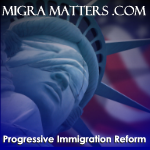
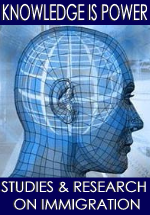


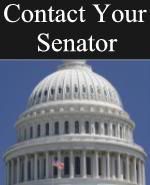

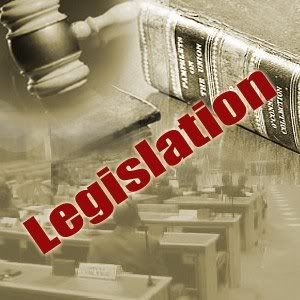 This is the first in a series of articles intended to look at some of the key provisions of the “The Security Through Regularized Immigration and a Vibrant Economy Act of 2007” (STRIVE Act of 2007) introduced by U.S. Representatives Luis Gutierrez (D-IL) and Jeff Flake (R-AZ).
This is the first in a series of articles intended to look at some of the key provisions of the “The Security Through Regularized Immigration and a Vibrant Economy Act of 2007” (STRIVE Act of 2007) introduced by U.S. Representatives Luis Gutierrez (D-IL) and Jeff Flake (R-AZ).
















